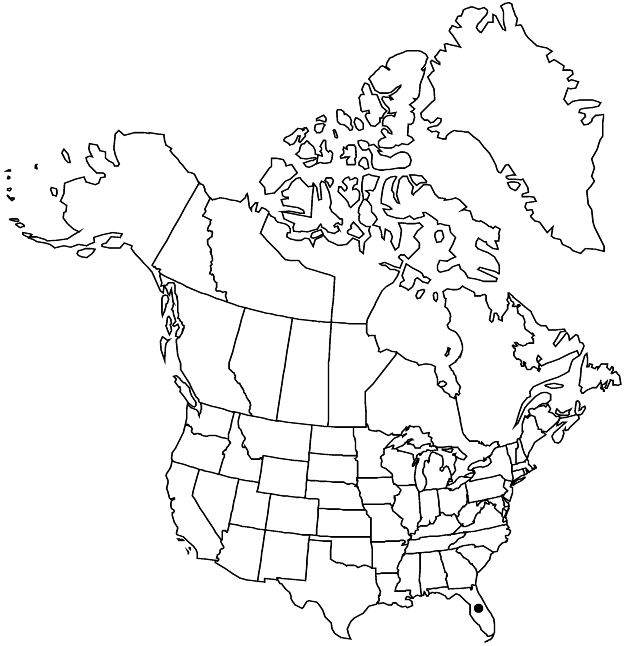Caperonia castaneifolia
Hist. Pl. Remarq. Brésil 3/4: 245. 1825.
Herbs, 30–140 cm; indumentum of nonglandular hairs. Stems erect, glabrescent or sparsely hairy, hairs fine, usually appressed; older stems 6–13 mm diam. Leaves: petiole 0.3–1.5 cm; blade linear, linear-lanceolate, lanceolate, narrowly ovate, or elliptic, 5–15 × 0.4–3 cm (L/W = (2–) 4–24), base narrowly acute, apex narrowly acute, acute, or obtuse, surfaces glabrescent or sparsely appressed-hairy. Inflorescences 1.5–7 cm, peduncle 0.5–3 cm, fertile portion 0.7–5 cm, with 1–2 pistillate flowers. Staminate flowers: petals narrowly obovate, 2–2.3 mm, often unequal, exerted well beyond calyx. Pistillate flowers: sepals ovate or elliptic, longest 2–2.4 mm, becoming 3–4.5 mm in fruit; petals 1.9–2.9 mm; ovary densely covered in bulbous-based, nonglandular trichomes. Capsules 5–6 mm wide, trichomes conic proximally, hairlike distally, nonglandular. Seeds pale-brown, 3 mm diam.
Phenology: Flowering and fruiting Aug–Nov.
Habitat: Shallow water or wet margins and banks of ditches, canals, marshy areas, lakes.
Elevation: 0–30 m.
Distribution

Introduced; Fla., Mexico, West Indies, Central America, South America
Discussion
Native to tropical America from Mexico and the West Indies to Brazil, Caperonia castaneifolia is known in the flora area from southern Florida and from one isolated population in Sumter County in central Florida. Collections in the flora area date from the late 1960s; older records attributed to this species appear to have been based on misidentified specimens of C. palustris. A report from Mississippi (C. T. Bryson and D. A. Skojac 2011) also was based on a misidentified specimen of C. palustris.
Caperonia castaneifolia is easily distinguished from C. palustris by the lack of glandular hairs, and also differs in its tendency to have thicker stems, narrower leaves, shorter inflorescences with fewer pistillate flowers, and larger staminate petals. Both species exhibit considerable inter-individual (and to a lesser extent within-individual) variation in leaf blade shape, but in the flora area, C. castaneifolia more frequently has narrower, linear or linear-lanceolate leaves.
Selected References
None.
Lower Taxa
"fine" is not a number."longest" is not a number.